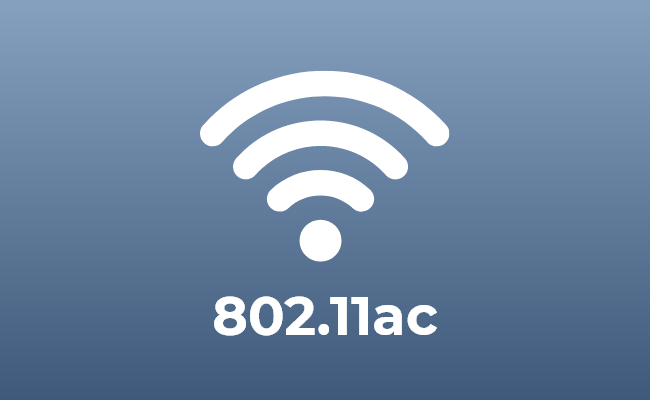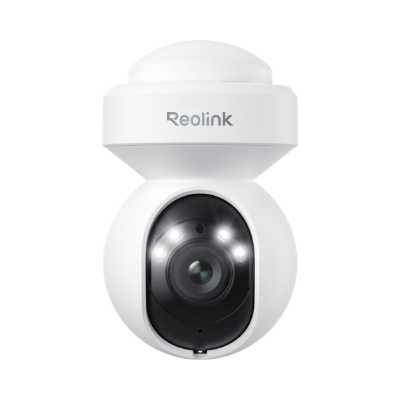The Ultimate Guide to 802.11ac WiFi: Features, Performance, and More

The Wi-Fi technology we use today has come a long way and there are still many improvements. Among all these improvements, the advancement towards 802.11ac has been the most significant one. 802.11ac Wi-Fi is renowned for its bandwidth-intensive application benefits, such as high-quality content streaming, online gaming, etc.
Since the wireless 802.11ac is among the best advancements in Wi-Fi technology, we will discuss all its technicalities in this article.
What is 802.11ac?
802.11ac is a wireless networking standard that debuted in 2013 and it is also known as Wi-Fi 5. It is a part of IEEE’s 802.11 wireless networking set of protocols, and it was released as a 5GHz Wi-Fi technology. 802.11ac or Wi-Fi 5 is the successor to the 802.11n or Wi-Fi 4 networking standard and it brings significant improvements in the performance figures as compared to the previous versions.
802.11ac provides high data transfer rates, better performance in dense environments, and a better networking capacity as well.
802.11ac Speed
Networking and data transfer speed is a notable quality of the 802.11ac standard. It is said to have a data transfer speed of 3.46 Gigabits per second theoretically which is achieved by using the wider 160MHz channel. This speed is significantly higher than the previous versions which were limited to a few hundred Mbps.
802.11ac Development
The development of 802.11ac was fueled by the increasing requirements for high wireless data transfer rates and better efficiency while accommodating more users. These requirements led to the development of different technologies for the 802.11ac standard which include:
- Wider channels
- More spatial streams
- Beamforming
- Higher modulation quality
Technical Specifications of 802.11ac
802.11ac wireless network standard is known as a significant milestone in the wireless connectivity world thanks to its upgraded technical specifications that improve its performance over older options.
Frequency bands and channel widths
The frequency band used for 802.11ac Wi-Fi is 5 GHz, which is optimal compared to older 2.4 GHz bands. 802.11ac uses 20, 40, 80, and 160 MHz channel widths for ultra-fast data transfers.
Modulation techniques
802.11ac Wi-Fi works on modern modulation techniques which in this case is 256 Quadrature Amplitude Modulation. It allows the networking standard to pack more data in every signal it transmits for higher throughput.
MIMO
The MIMO technology used for 802.11ac Wi-Fi allows routers to communicate with multiple devices simultaneously instead of sequentially. This way, the performance improves especially in crowded environments.
Beamforming
Beamforming technology used by 802.11ac focuses the network signals on the receiving device in the form of a beam rather than scattering signals significantly improving reliability.
Maximum theoretical data rates
The maximum theoretical data rates for the 802.11ac Wi-Fi standard are 3.46 Gbps, which significantly improves over a few hundred Mbps from previous technologies.
Pros and Cons of 802.11ac
802.11ac Wi-Fi technology has its pros and cons so here we will list both the positive and negative aspects that you must know:
Pros of 802.11ac
- It provides gigabits of speed as compared to megabits of 802.11n.
- It can easily cover whole space without any dead spots.
- It uses more extensive channel range for improved transmission capabilities.
- Complex tweak plan of up to 256QAM are used to improve transmission rates by 33%.
- Gives more bandwidth when there are more devices.
Cons of 802.11ac
- 1024QAM high tweak plans are not available.
- Dispute based uplink access creates frequent reliability issues.
- The 2.4GHz Wi-Fi band is not upheld.
802.11ac vs. 802.11n: What’s the Difference?
While 802.11ac is Wi-Fi 5, 802.11n is the Wi-Fi 4 standard and there are some significant differences between the two as elaborated below.
Speed
The biggest difference between these two is their speed. While 802.11ac can go up to 3.46 Gbps theoretically, 802.11n can only reach the maximum of 600 Mbps theoretical data transfer speeds.
Range
Both these Wi-Fi networking standards can cover comparable ranges, 802.11ac provides better coverage through its beamforming technology. The indoor range of 802.11n is 70m while that of 802.11ac is 25m.
Frequency bands
802.11n operates on 2.4 GHz and 5GHz frequency bands giving more flexibility to use one according to the requirement. Meanwhile, 802.11ac frequency exclusively uses a 5 GHz frequency band.
Technology
The technology is the last thing to compare in this 802.11ac vs 802.11n comparison. While both feature MINO technology, 802.11ac combines it with beamforming, making communication even more stable.
802.11ac vs. 802.11ax: What’s the Difference?
802.11ac is the 5th generation or Wi-Fi 5 technology while 802.11ax is the 6th generation Wi-Fi 6 technology. These two have many differences as explained below:
Speed
Speed is the first thing to compare in the 802.11ac vs 802.11ax comparison. 802.11ac only gives 3.46 Gbps while 802.11ax can provide 9.6 Gbps transfer speeds.
Range
The range is the second critical consideration in this 802.11ac vs Wi-Fi 6 comparison. 802.11ac uses 5 GHz only so it covers only 25 meters of indoor space. Meanwhile, Wi-Fi 6 or 802.11ax uses both 2.4 and 5 GHz resulting in a range of up to 45 meters.
Technology (OFDMA, MU-MIMO)
802.11ax doubles the capacity of the 802.11ac standard through improvements in the technology. It provides orthogonal frequency-division multiple access with multiple-user MIMO tech. With up to 8 users in uplink and downlink connections, 802.11ax can simultaneously send various bandwidths to different devices.
Increased capacity
802.11ax comes with increased capacity to deal with huge traffic simultaneously. Its MU-MIMO and OFDMA technologies help deal with more devices as compared to 802.11ac.
Power efficiency
802.11ax comes with TWT technology, which can optimize the battery life of devices connected by scheduling communication times. It is not available in 802.11ac standard.
Backward compatibility
While both 802.11ac and 802.11ax are backward compatible, 802.11ax provides better stability and performance efficiency in environments with mixed devices.
Bonus: 802.11ac Security Camera Recommendation
802.11ac Wi-Fi standard is exceptional when it comes to providing good quality video streaming for security and surveillance needs. Multiple wireless cameras support this wireless networking standard for efficient performance, and below are our top 2 recommendations for 802.11ac security cameras:
4K Security Camera – RLC-811WA
This 4K UHD smart camera comes with all the necessary connectivity and security features. It works on Wi-Fi 6 technology, supporting dual-band connectivity with 2.4 and 5 GHz networks for good transfer speeds and a bigger coverage area. It also offers 5x optical zoom with intelligent object detection and color night vision.
4K WiFi 6 Security Camera with Night Vision
4K 8MP Ultra HD, Dual-Band WiFi 6, Color Night Vision, 5X Zoom, Smart Detection, Two-Way Audio, Built-in Siren.
4K PTZ Security Camera – E1 Outdoor Pro
E1 Outdoor Pro is a 4K 8MP security camera working on Wi-Fi 6 technology, offering dual-band connectivity that works over 5 and 2.4 GHz. It has a color night vision feature along with 3x optical zoom, so nothing goes unnoticed. This camera has an auto-tracking feature thanks to its 50-degree tilt and 355-degree pan motions.
4K WiFi PTZ Camera with Auto-Tracking
4K 8MP Super HD, Smart Person/Vehicle Alerts, 355° Pan & 50° Tilt & 3X Optical Zoom, Auto Tracking, Color Night Vision.
FAQs
1. Is 802.11ac Wi-Fi 5 or 6?
802.11ac wireless networking standard is known as the 5th generation of Wi-Fi standards by IEEE and it is also known as the Wi-Fi 5. So, it is not Wi-Fi 6 which is also known as 802.11ax. 802.11ac is designed to provide fast transfer speeds and reliable connections and 802.11ax comes with further improvements.
2. Is 802.11ac 2.4 or 5 GHz?
802.11ac operates on 5 GHz frequency, unlike the older versions that worked on 2.4 GHz. This bigger frequency provides better networking speeds and prevents interference from other wireless devices and their signals in the environment, compared to 2.4 GHz.
3. Is 802.11ac outdated?
802.11ac was released in 2013, and we have a more advanced 802.11ax version available, providing even better performance figures. However, 802.11ac is still not outdated, considering its wide range of applications and exceptional performance for use cases. 802.11ac still offers impressive networking speeds for high-quality video streaming and file transfers.
Conclusion
The Wi-Fi 5 or 802.11ac networking standard can be considered as one of the most vital improvements in wireless networking technology. It brought a significant leap in the world of wireless networking that fueled further advancements in Wi-Fi technologies. 802.11ac Wi-Fi is still a fundamental building block for wireless networking today for applications like video streaming, online gaming, surveillance, etc.
Search
Be in the Know
Security insights & offers right into your inbox


